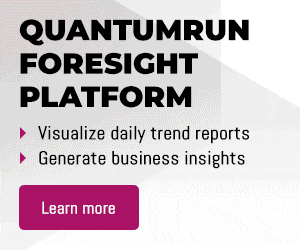Controlling drone air traffic: Safety measures for a growing aerial industry
Controlling drone air traffic: Safety measures for a growing aerial industry
Controlling drone air traffic: Safety measures for a growing aerial industry
- Author:
- May 6, 2022
Insight summary
The integration of drone air traffic control with existing systems promises to make skies safer for all, from delivery drones to helicopters. This shift is spurring new business models, from subscription-based drone services to specialized pilot training programs, while also posing challenges for governments to regulate drone use effectively. As drones become more ingrained in daily life, from urban deliveries to emergency response, the implications range from job shifts in the courier sector to new opportunities for environmental monitoring.
Drone air traffic context
The US Federal Aviation Administration (FAA) has an Air Traffic Management (ATM) system that is designed to oversee and regulate the movements of manned aircraft within American airspace. This system is now being designed to work in tandem with the Unmanned Aircraft System Traffic Management (UTM) system. The UTM's primary goal is to manage the operations of unmanned aircraft, commonly known as drones, both for civilian use and for federal agencies, ensuring that they integrate safely and efficiently into the broader airspace ecosystem.
A critical part of a viable air traffic control system being established for personal drones (and eventually cargo and personal transport drones) will likely be the collaboration between research and regulatory organizations and the informed participation of thousands of experts and drone operators. For example, the National Aeronautics and Space Administration's (NASA) Ames research facility in Silicon Valley aims to develop a knowledge base that will aid in the management of vast numbers of low-altitude drones and other airborne stakeholders within US airspace. The purpose of the UTM is to design a system that can safely and efficiently integrate tens of thousands of drones into monitored air traffic that operate in low-altitude airspace.
The UTM is centered on each drone user's anticipated flight details being shared digitally. Unlike modern air traffic control, every drone user could have access to the same situational awareness of their airspace. This principle, and the broader control of airspace utilized by drones, will become increasingly critical as drone usage expands for personal and commercial applications.
Disruptive impact
The integration of a drone air traffic control system with existing Air Traffic Management (ATM) systems could make the skies safer for all types of aircraft. By coordinating drone movements, especially those of delivery drones, with other low-flying aircraft like helicopters and gliders, the risk of aerial collisions could be minimized. This feature is particularly important near local airports, which could be designated as no-fly zones for drones to further reduce risks. The system could also help in managing air traffic during emergency situations, allowing for quicker response times for medical or disaster relief needs.
The development of infrastructure like landing pads, charging stations, and drone ports could be essential for the widespread use of drones in urban settings. Designated air corridors could be established to guide drones along specific routes, minimizing the risk to urban bird populations and critical infrastructure like power lines and communications equipment. This kind of planning could make drone deliveries more efficient and less disruptive to city life. However, it's worth noting that the convenience and speed of drone deliveries may reduce the demand for traditional delivery methods, affecting jobs in the courier sector.
For governments, the challenge lies in creating a regulatory environment that both encourages the responsible use of drones and addresses public safety concerns. Regulations could set standards for drone operation, pilot certification, and data privacy. This development could pave the way for broader applications of drone technology, such as environmental monitoring or search and rescue operations.
Implications of controlling drone air traffic
Wider implications of controlling drone air traffic may include:
- Lowered incidence of accidents between drones, other forms of aircraft, and installed urban infrastructure leading to reduced insurance premiums for drone operators and aviation companies.
- A wider array of businesses using drones to engage in novel forms of B2B or B2C commercial operations, such as aerial photography or agricultural monitoring, diversifying revenue streams and creating new market niches.
- Novel drone platform services springing up that enable companies and individuals to subscribe to or rent drone usage/services as needed, shifting the business model from ownership to a subscription-based approach.
- The increased availability of drone piloting and skill development programs leading to a new workforce skilled in drone operations, thereby creating new job opportunities and educational pathways.
- Different jurisdictions taking unique approaches concerning how they regulate drones, leading to cities and towns becoming more attractive for drone-related investments and technological development.
- The establishment of designated drone routes and air corridors in urban areas, reducing the risk to local wildlife and environmental features, such as rivers and parks.
- The potential for drones to take over a significant portion of light delivery tasks, leading to a decline in the number of traditional delivery vehicles on the road and a corresponding reduction in carbon emissions.
- The possibility of drones being used for illicit activities, such as smuggling or unauthorized surveillance, leading to stricter law enforcement measures and potential infringements on civil liberties.
- The development of drone technology outpacing the creation of regulatory frameworks, leading to a patchwork of local, state, and federal laws that may hinder the cohesive growth of the drone industry.
Questions to consider
- Will drone deliveries replace other forms of e-commerce delivery over time?
- Name an example of a law a government can implement to ensure stricter compliance with drone air traffic regulations, which enhances public safety.
- Which industries stand to benefit the most from the increased use of drones?
Insight references
The following popular and institutional links were referenced for this insight:




